Big Data – The Next HIT/EMR Boondoggle?
By Frank Poggio

Here we are on the back side of the HITECH wave. EMR vendors can see that the government-sponsored manna will soon end, so IT marketers have been prospecting for the next gold mine. They found it and it’s called “Big Data and Analytics.”
It really makes perfect sense. After they install the deca-million dollar EMR systems that capture and track mountains of healthcare operational data and send it to the government, what else are can they do with it? Analyze it! Analysis for clinical and administrative purposes, analysis for planning, analysis for diagnosis, for prognosis, for best practices, for financial management, growth strategies, market penetration, and more. To paraphrase an old cliché, “There’s got to be a pony in all that data somewhere.”
It is often repeated and rarely challenged that healthcare providers are a decade behind commercial industry when it comes to IT tools and implementation. That clearly is the case when we look at Big Data (BD). But before healthcare jumps into this numerical ocean, maybe we can learn something from commercial industry and bypass many of the hurdles and errors private industry hit during its initial foray into the world of analytics.
First, a little history. Today it’s called Big Data and Analytics, but in the 1960s it was called Operations Research, Management Science, or Quantitative Analysis. Operations research was actually an outgrowth of World War II. The Defense Department asked mathematicians to identify more effective and efficient methods for bombing the enemy. The British used modeling and data analysis to improve submarine warfare.
After the war, these sophisticated mathematical tools were applied to volumes of operational data captured by many business transaction systems of the 1970s. The focus was on optimizing production and improving forecasting in order to reduce the risk embedded in strategic decision making. The former used mathematical models such as linear programming and queuing theory aimed at maximizing throughput and minimizing costs. The latter was typically done with regression analysis, probabilistic models, and Monte Carlo simulation to assess and minimize risk. In the 1980s and 1990s, more sophisticated tools such as random walks, chaos theory, and fuzzy logic were developed and applied to financial and other business problems.
Today the thinking in healthcare is that with our ever-expanding sea of Big Data, we should start applying these same tools to help address the healthcare cost crisis. Not at a bad idea. But before we spend billions searching for our “pony,” we should at least learn something from the sins of our brothers in the commercial world.
During the ’70s and ‘80s, commercial industry spent billions trying to apply these concepts with only marginal benefit. It has only been in the last 10 or 15 years that analytics in commercial industry has really paid off with leaps in improved logistics and productivity, while the jury is still out on management, strategic, and predictive applications. It took decades for commercial industry to see measurable benefits from BD. Here are two of the reasons and their implications for healthcare.
Bad or insufficient data. Thirty years ago when commercial firms crunched big wads of financial data, they found that there were significant problems correlating econometric data with accounting data, and more so with tax and government data. Earlier in my career I worked for GE in one of their OR groups. We found that merging or correlating the data originally captured for the different audiences rendered unusable results. Much time and effort had to be spent reclassifying financial data to make it sync properly with econometric and government data. In addition, we came to realize that volume and statistical data not captured at the source was fraught with errors and misclassifications. Thousands of hours were spent normalizing, scrubbing, and disaggregating data before we could make reliable correlations for decision making.
Healthcare has some very similar challenges. The issue with accounting data versus econometric data is the same, but the disparities between reimbursement data (tax) and business operation or econometric data is far greater. As an example, commercial industry had to invest billions in sophisticated product/service costing systems, while today in healthcare, many institutions still rely on Medicare cost analyses, which any financial manager would classify as nothing better than gross approximations.
Many of the BD analytics will incorporate and be driven by cost comparisons. Medicare cost analysis is a long way from a true product/service cost accounting system.
Merging clinical data and financial data is currently the rage, but another big hole will be using billing documents, charges, or RVUs as a basis for analysis. Provider charges are not related to service cost because they have been warped by decades of government policy and payment nuances. They are as far from financial reality as we are from the sun. In addition, the coding and classifications embedded in billing documents have been twisted to meet the objectives of payors and payment rules. Everybody agrees that ICD-9 coding is inadequate if not inaccurate, yet no doubt it will be a core element in many of the BD analytics clinical / financial models.
Reality versus the “model.” After several decades, commercial firms came to realize that many of the mathematical models they employed only loosely fit the real world. Models are far simpler representations of the real world and typically model builders fill in the blanks and more complex parts with assumptions.
The real world keeps changing. Yet many of the predictive tools we use such as regression analysis are based heavily on past performance and have limited ability to reflect change. Medicine is in constant change. Hardly a week goes by without a new research report that retires an old protocol and replaces it with a new one, while new drugs, modalities, and technologies are introduced almost every day.
The practice of medicine is both science and art. It is difficult to properly model the science part, let alone the art component. The same can be said for management: science or art? It took decades and millions of dollars before commercial industry realized the limitation of many of the predictive models they applied and how sensitive the predictions were to the underlying assumptions. Correctly modeling the subjective judgment component of management and medical decision making will be a very expensive task.
Clearly the old GIGO rule applies to Big Data as much as it applies to our day-to-day EMR transaction systems. The significant difference will be in the investment needed for BD just to get past level one GIGO. When we implement a transaction system we can see if it works effectively or has bugs in a matter of days. With Big Data and Analytics measuring the efficacy and impact can take years, be very expensive, and a financial boondoggle for vendors.
Next up: five things to check before diving into the Big Data ocean.
Frank Poggio is president of The Kelzon Group.



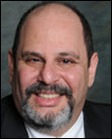

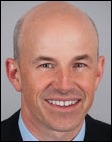
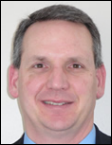



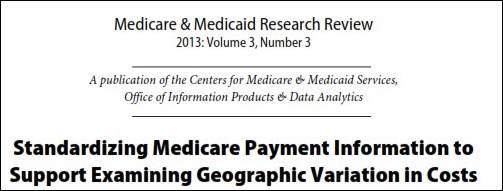


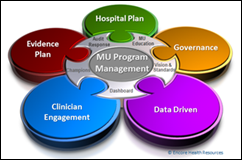


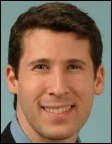

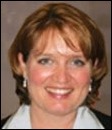

I appreciate the information you have shared via this blog. Your insights on school health IT are fascinating, and I…